
Located at the outskirts of Kangra town, around 22 km from Dharamshala in Himachal Pradesh, the Kangra Fort stands atop a hill between River Manjhi and Banganga, among the foothills of the Dhauladhar Range. Also known as Nagarkot and Kot Kangra and spreading over an area of around 4 km, it is the largest fort in the Indian Himalayas, occupying the lower valley of the River Beas and its tributaries and probably the oldest in India, witness to thousands of years of grandeur, invasion, war, wealth and evolution.
Although the exact origin of the Kangra Fort is not known, according to local legends it was constructed around 3500 years ago by Susharma Chandra, the 234th king of the Katoch dynasty of the Rajputs, linked with the ancient Kingdom of Trigarta which was mentioned in the Hindu epic Mahabharata.
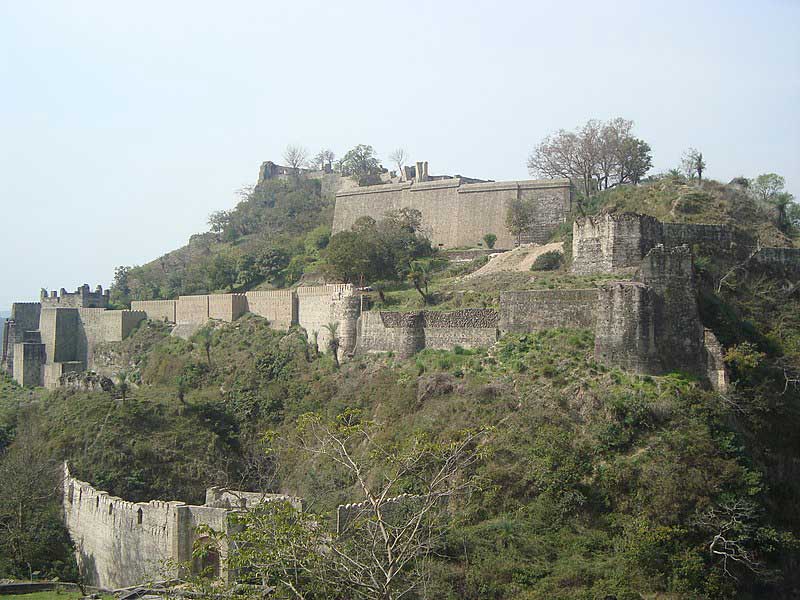
The colossal Kangra Fort, guarded by majestic rampart parts and high walls made of black stones, was attacked several times, almost every ruler, supposedly for its 21 treasure wells with each well being 4 m deep and 2.5 m wide in circumference, either by an invader or a native ruler, trying to lay control over the Kangra fort, which possibly started by Raja Sreshtha of Kashmir in 470 AD. While Mahmud of Ghazni invaded it 1009, the Turkish Sultan Muhammad Bin Tughluq captured it in 1337 AD and his successor Firoz Shah Tughluq in 1351 AD.
Much later, Raja Dharamchand, the ruler of Kangra 1528/1563, submitted to the Mughal Emperor Akbar in 1556 and agreed to pay tribute and was granted the title of Maharaja by Akbar in return. However, the Kangra Fort came under the complete dominance of the Mughals, when Emperor Jahangir overtook the fort in the year 1622 after a battle of more than fourteen months, annexed the Kangra kingdom into the Mughal Empire and also appointed a local governor to regulate the turbulent chiefs of the hill.

As the Mughal Empire began to crumble during the mid 18th Century, Raja Sansar Chand II, a descendant of Raja Dharam Chand, began a series of conquests of Kangra with the support of Sikh leader, Jai Singh Kanhaiya, the founder and leader of the Kanhaiya Misl, one of the twelve misls of the Sikh Confederacy.
However, after the death of Mughal governor Saif Ali Khan, when his son surrendered the fort to the Sikh leader, Jai Singh Kanhaiya in 1783, in return for his safe passage, Raja Sansar Chand besieged the fort with the help of other Sikh misl leaders, like Maha Singh of the Sukerchakia Misl and Jassa Singh Ramgharia of the Ramgharia Misl, gaining the control of the Kangra fort in 1786, by peaceful treaty with Jai Singh Kanhaiya in return for territorial concessions in the Punjab.
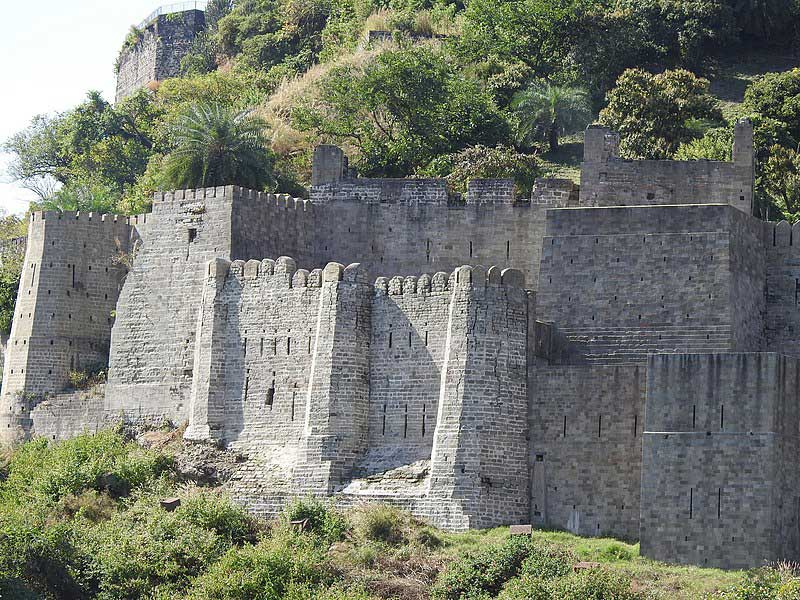
After being settled in his kingdom of Kangra, Sansar Chand focused to expand his kingdom and quickly conquered the nearby kingdoms of Chamba, Mandi, Suket and Nahan, but was forced to be engaged in a continuous conflict with the invading Gurkhas. Finally, when an army of 40,000 Gurkhas crossing the Sutlej River quickly captured fort after fort and struck a decisive blow in 1808, capturing the fort of Pathiyar or Palampur, Sansar Chand took refuge in the Kangra fort and sought help from Maharaja Ranjit Singh of Lahore. This led to the Nepal-Sikh war of 1809, in which the Gurkhas were defeated and were forced back to the Ghaghara River, while Ranjit Singh took control of the ancient fort, along with 76 villages, leaving the rest of Kangra to Sansar Chand. Subsequently, during the First Anglo-Sikh War between the Sikh Empire and the British East India Company, resulting in defeat and partial subjugation of the Sikh empire and cession of Jammu & Kashmir as a separate princely state, the Kangra Fort fell into the hands of British troops under Henry Lawrence on 28 May 1846, till it was almost ruined in a devastating earthquake on 4th April 1905.
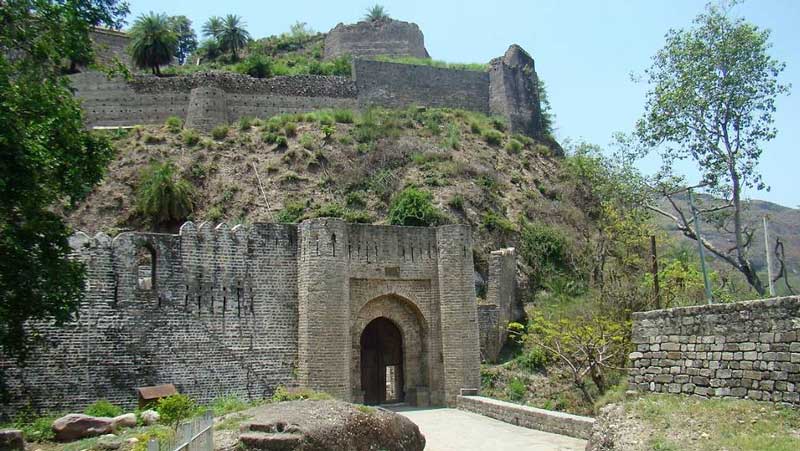
The entrance to the fort, designed with stone carvings, is through a small courtyard enclosed between two gates, locally called phataks or darwazas, which were built during the Sikh period, as is evident from an inscription over the entrance. A long and narrow passage, stretching from the main entrance to the top of the imposing fort, passes through the Ahani and Amiri Darwaza, both attributed to Nawab Alif Khan, the first governor of Kangra appointed the Mughal Emperor. The passage takes a sharp turn after about 500 feet from the outer gate and passes through the Jahangiri Darwaza, probably credited to the Mughal Emperor Jahangir, after his conquest of the Fort. Two fragments of a white marble slab containing a Persian inscription, originally occupied a sunken panel over the gate, was recovered in 1905, which in all probability, is a record of Jahangir's conquest of the Fort.
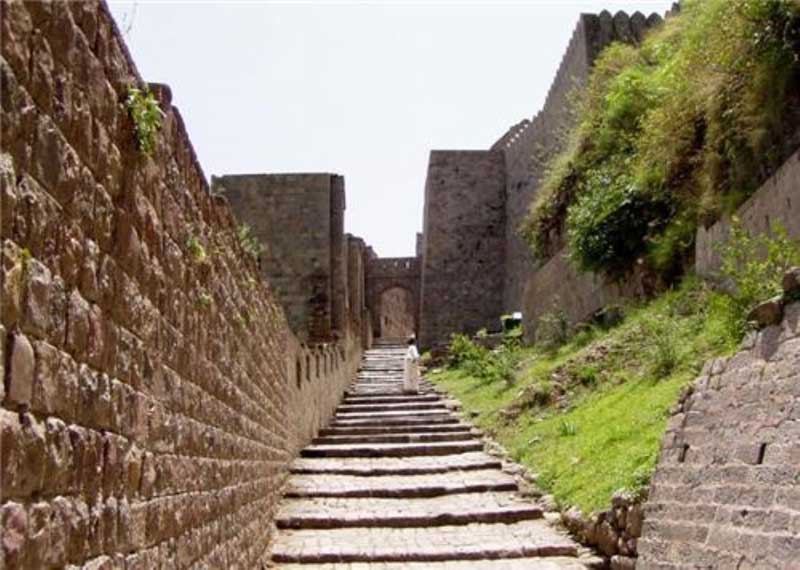
Apart from gates mentioned above, the Darsani Darwaza, flanked by the defaced statues of River Goddesses Ganga and Yamuna, provides access to a courtyard, along the south side of which stand the stone temples of the three Hindu deities, namely Ambika, Shitla and Lakshmi Narayana. The fort complex also contains a Jaina temple, containing a stone idol of Lord Adinath.
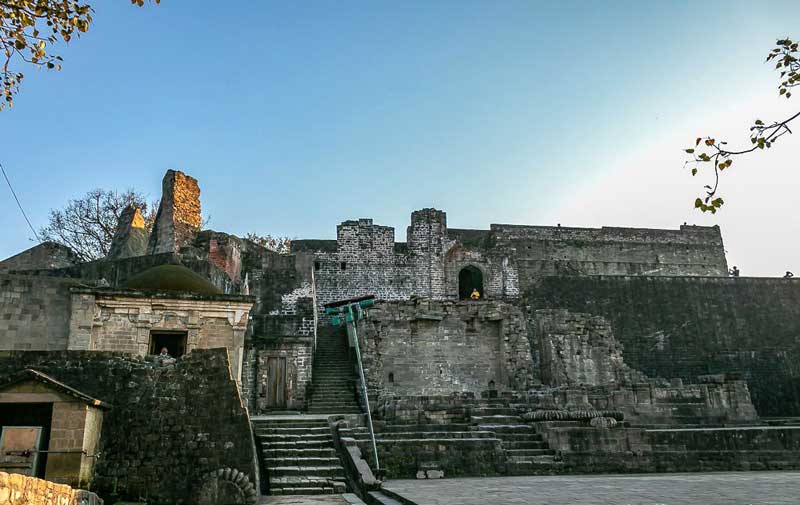
The great Kangra fort, a symbol of elegance and royalty, but mostly in ruins now, offers a mesmerising view from its roof, apart from containing a museum, proving information about the displayed artefacts, idols and portraits of the 19th century.